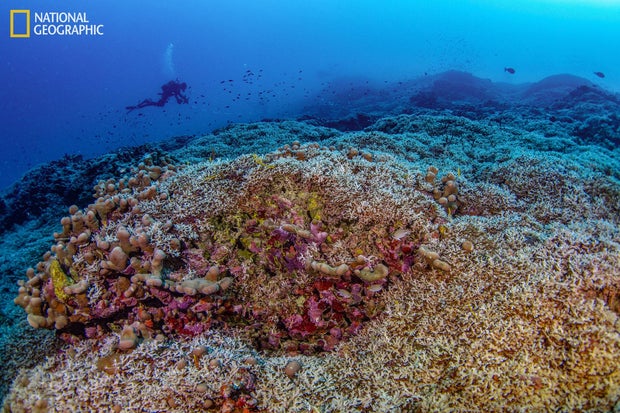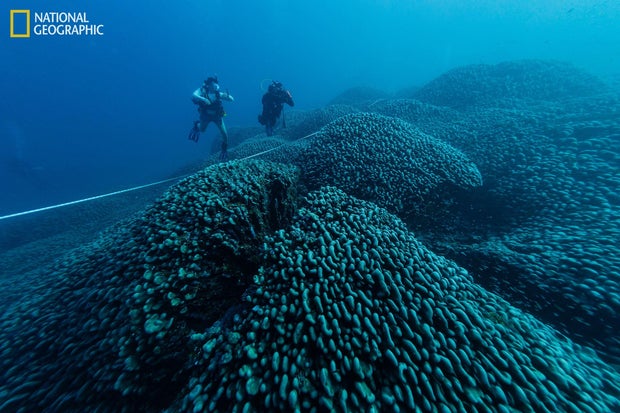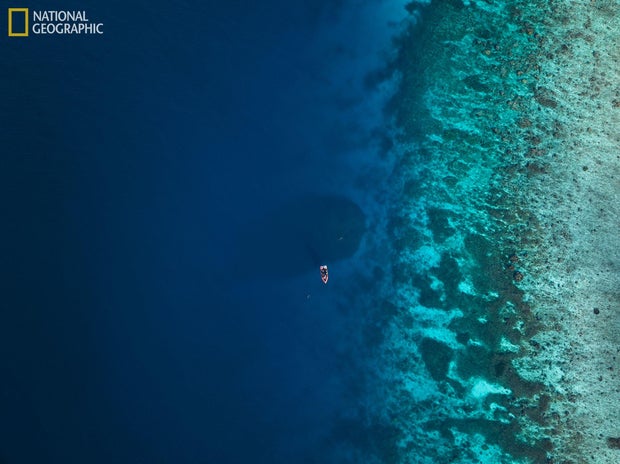Scientists say they have found the world’s largest coral near the Pacific’s Solomon Islands, announcing Thursday a major discovery “pulsing with life and color.” The coral is so immense that researchers sailing the crystal waters of the Solomon archipelago initially thought they’d stumbled across a hulking shipwreck.
“Just when we think there is nothing left to discover on planet Earth, we find a massive coral made of nearly one billion little polyps, pulsing with life and color,” marine ecologist Enric Sala said.
The standalone structure, formed from a “complex network” of tiny coral polyps, has likely been growing for 300 years or more, the researchers said.
Manu San Félix/National Geographic Pristine Seas
At about 111 feet wide and 104 feet long, the team said the “mega coral” was three times bigger than the previous record holder — a coral dubbed “Big Momma” in American Samoa. The massive coral is not a coral reef, structures that can be far larger but are comprised of many distinct coral colonies, they explained.
“While Big Momma looked like a huge scoop of ice cream plopped down on the reef, this newly discovered coral is as if the ice cream started to melt, spreading forever along the seafloor,” said lead scientist Molly Timmers.
It’s longer than a blue whale and thought to be “so colossal” that it could be seen from space.
ManuSan Félix/National Geographic Pristine Seas
The coral was discovered at the southeastern tip of the Solomon Islands, in an area known as the Three Sisters. It was spotted by a National Geographic team embarking on a scientific expedition in the region.
Hotter and more acidic oceans have drained the life from corals in many of the region’s tropical waters, a process called bleaching, including Australia’s famed Great Barrier Reef. But this latest discovery offered a small glimmer of hope, the research team said.
“While the nearby shallow reefs were degraded due to warmer seas, witnessing this large healthy coral oasis in slightly deeper waters is a beacon of hope,” said coral scientist Eric Brown.
The lush rainforests and pristine waters of the Solomon Islands have long been celebrated for their ecological diversity. Wildlife observations made in the area in the 1920s helped prove a key part of Charles Darwin’s theory of evolution.
“There is so much to learn about the richness of marine life and the ocean ecosystem, but this finding opens doors of knowledge,” said top Solomon Islands official Collin Beck. “More scientific research is needed to better understand our rich biodiversity and our planet.”
Steve Spence/National Geographic Pristine Seas
The discovery was announced as representatives from around the world meet in Baku, Azerbaijan for the COP29 United Nations summit on climate change.
The Solomon Islands national climate minister, Trevor Manemahaga, told CBS News’ partner network BBC News at the summit that his nation was proud to be the home of the massive, newly discovered coral.
“We want the world to know, that this is a special place, and it needs to be protected,” he told the BBC. “We rely mostly on marine resources for economic survival, so coral is very, very important.”
Small, low-lying island nations such as the Solomons are among the most vulnerable to the increasing effects of climate change and sea-level rise.





